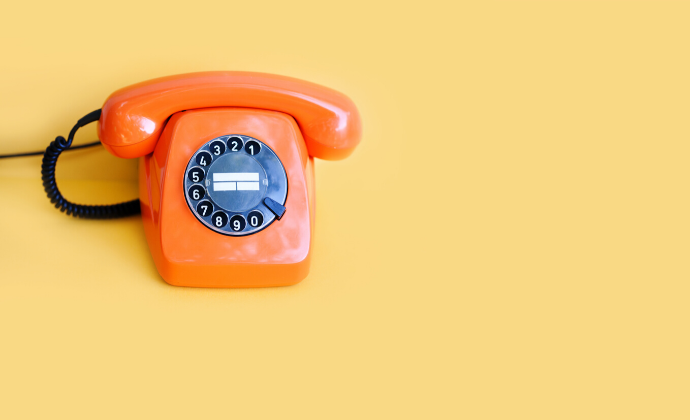Telephone Follow-Up Improves ED Patient Education, Engagement
The automated telephone follow-up serves as a good screening for those who need extra patient education and engagement after ED discharge.

Source: Getty Images
- Better patient education and communication during the emergency department discharge process could be just a phone call away, according to a new study indicating telephone follow-up is a valid way to promote ED patient engagement.
The study, published in JAMA Network Open by researchers from the University of California San Francisco and the University of Colorado Aurora, found that the risk of seven-day ED readmission was significantly lower for patients who got a follow-up phone call within two days of ED discharge.
These findings come as medical professionals look to improve patient engagement and education in the ED setting. Patients usually visit the ED because they have serious acute care needs. The ED is not a fit for things like chronic care management or preventive care, during which most providers form deep bonds with patients. Rather, ED clinicians treat the acute need and discharge the patient to the patient’s usual source of care.
But therein lies the rub. By virtue of treating serious acute episodes, patient engagement is paramount for ED providers. Patients need to know what happened during their ED visit and how to care for themselves at home, lest they experience another serious acute care need and have to visit the ED again.
“The emergency department (ED) discharge process necessitates communication of complex information in a clear and concise way,” the researchers explained in the article’s introduction. “However, information is often explained quickly and may be difficult for patients to remember.”
And as the healthcare industry works to drive down healthcare costs and pursues value-based care, avoiding high-cost settings like the ED is of utmost importance. ED providers need to determine an effective way to both keep up with the fast pace of the ED environment while also delivering high-quality patient education and engagement.
This latest study showed that two-day follow-up phone calls could be viable.
The researchers compared seven-day ED readmission risk for nearly 3,000 patients who received automated follow-up calls with those who experienced usual discharge patient engagement, finding that the phone calls were extremely effective.
The automated phone calls, which could happen in English, Spanish, or Cantonese, depending on patient language preferences, foremost sought to establish whether the patient would like to be connected to an actual provider to answer care-related questions. When patients did request another call, an advanced practice provider conducted the phone call within three days.
The automated calls also asked patients questions about any questions they have regarding their post-discharge care instructions, their follow-up plans, or medications prescribed to them during their ED visit.
Notably, these phone calls worked to reduce the risk of ED readmission. Only 7.6 percent of patients getting an automated follow-up call were readmitted to the ED after seven days, compared to 10.3 percent of those without a follow-up call who experienced the same.
That lower risk of ED readmission could be linked to the qualitative improvements in patient engagement that came with the follow-up calls. Those in the intervention group were slightly more likely to say they followed up with their usual source of care, understood their health issues, and received their discharge medications, although those differences were not statistically significant.
What’s more, the researchers found no difference in likelihood to recommend among control and intervention patients, suggesting that follow-up calls are more effective at controlling ED readmissions than improving patient satisfaction.
“Regardless of the cause of frequent ED use, telephone callbacks have been proposed as 1 mechanism for enhancing the discharge process by increasing the patient’s understanding of the discharge process, by providing additional social support, and, ideally, by reducing return visits,” the researchers wrote in the study’s discussion.
“Although callback programs are often regarded as a way to increase patient satisfaction, this study showed little difference in patient-reported metrics of quality of care, including whether patients would recommend the ED to others.”
That said, the researchers did observe patients were at least intrigued by the follow-up calls. About a third of those getting the initial automated call opted into following up with an APP via telephone within three days, totaling to about 7 percent of all patients in the study connecting with a clinician after ED discharge.
If nothing else, this should streamline the ED discharge and patient engagement protocol. Not every patient will need ED follow-up, and as healthcare balances a precarious clinician burnout problem, the researchers posited it may work well to first conduct ED follow-up needs with an automated phone call.
